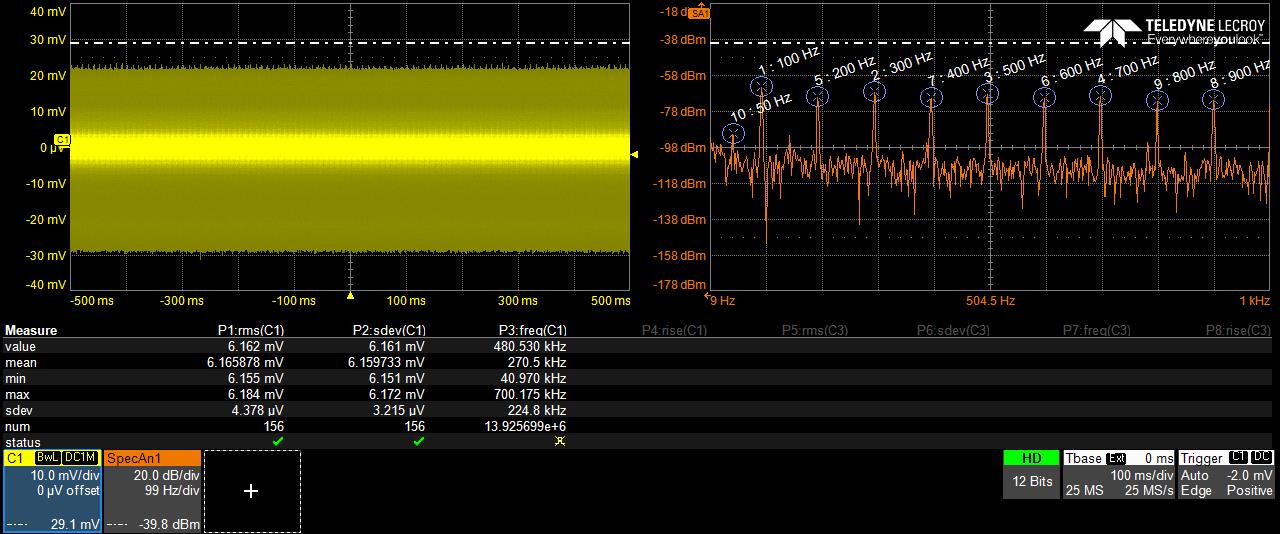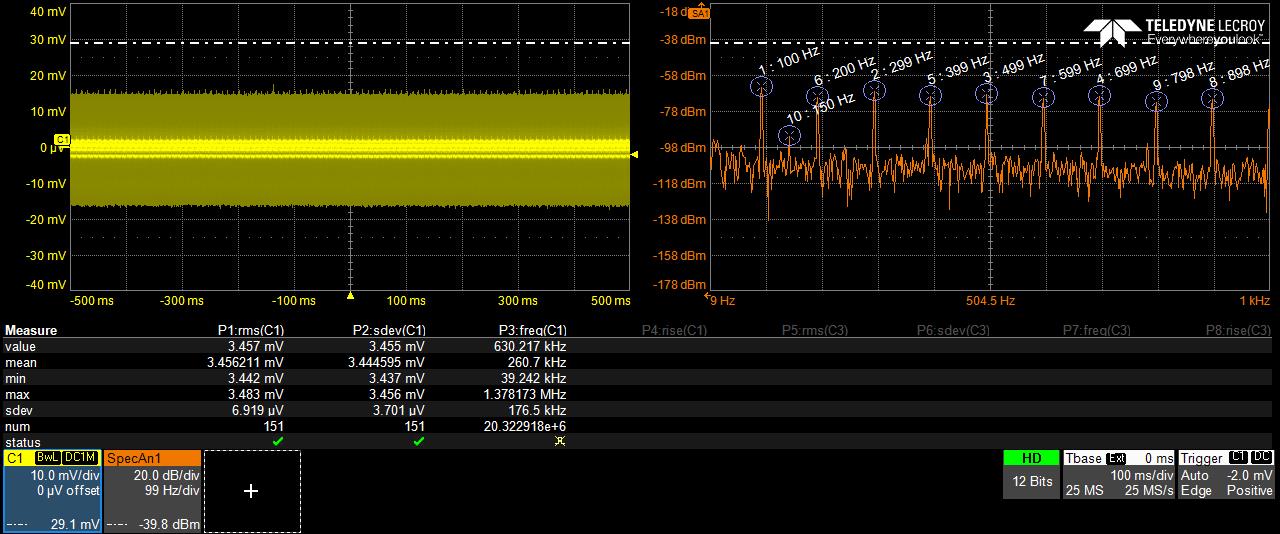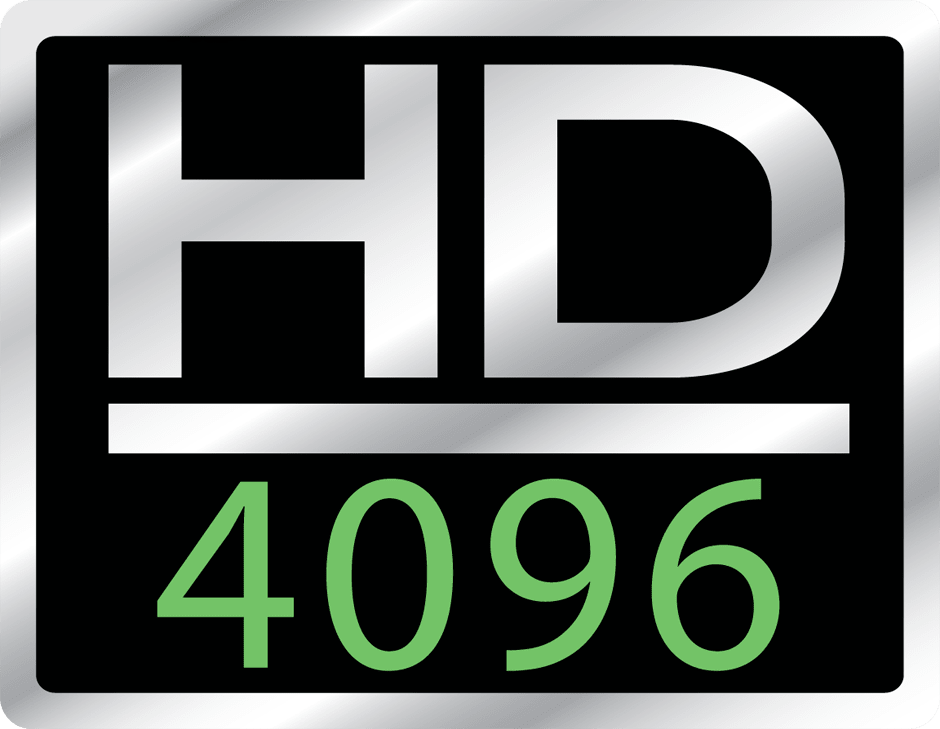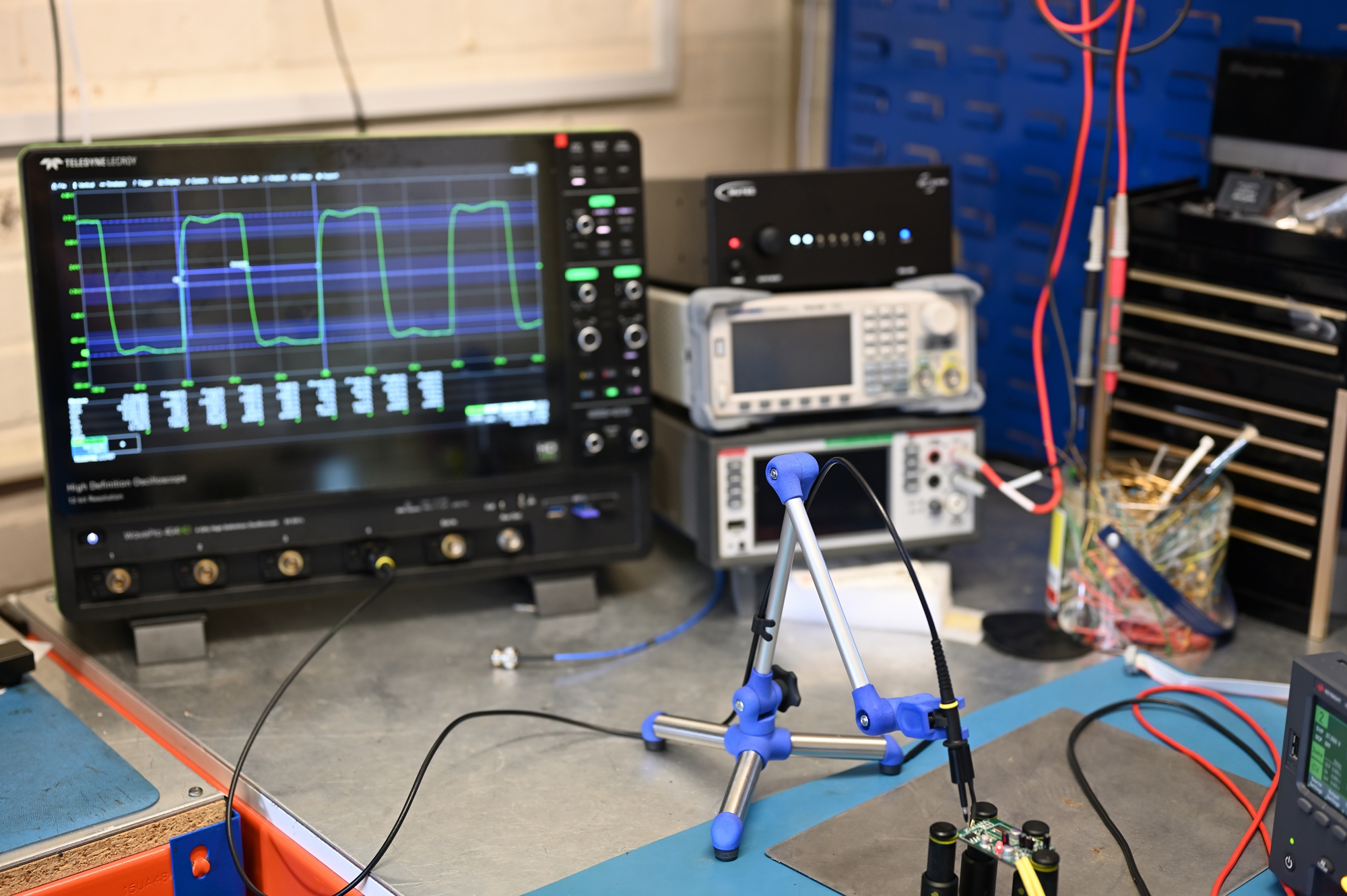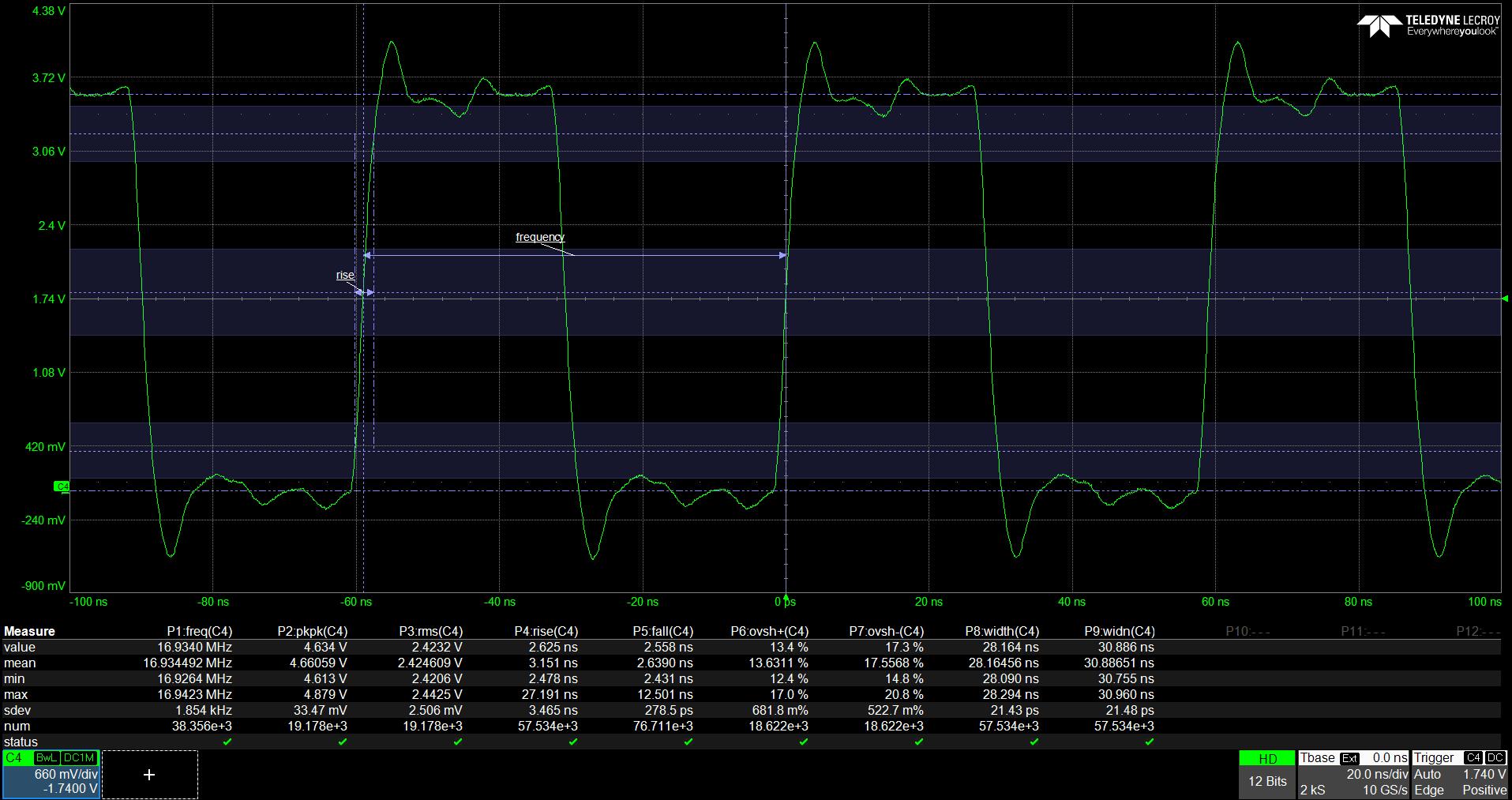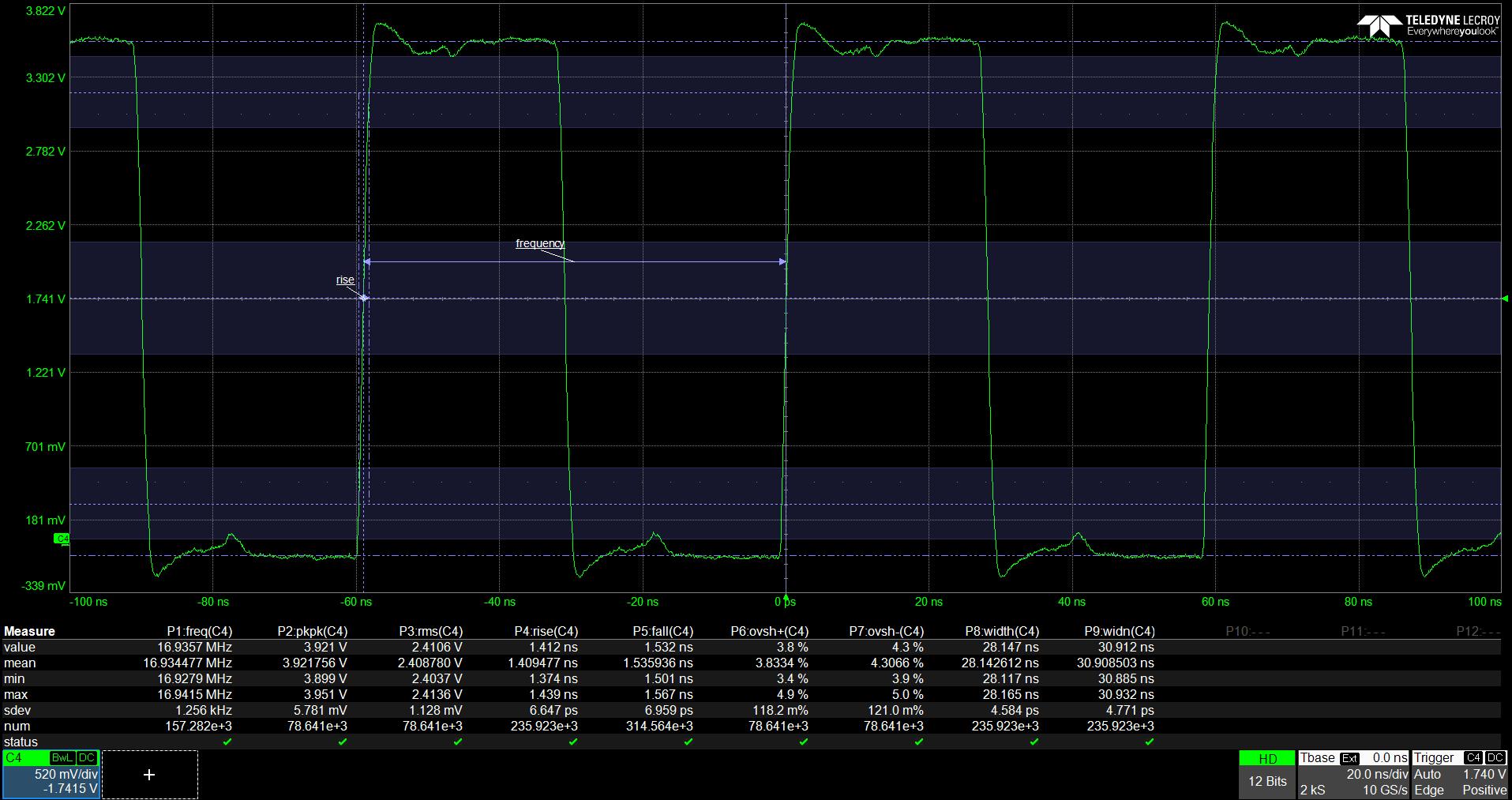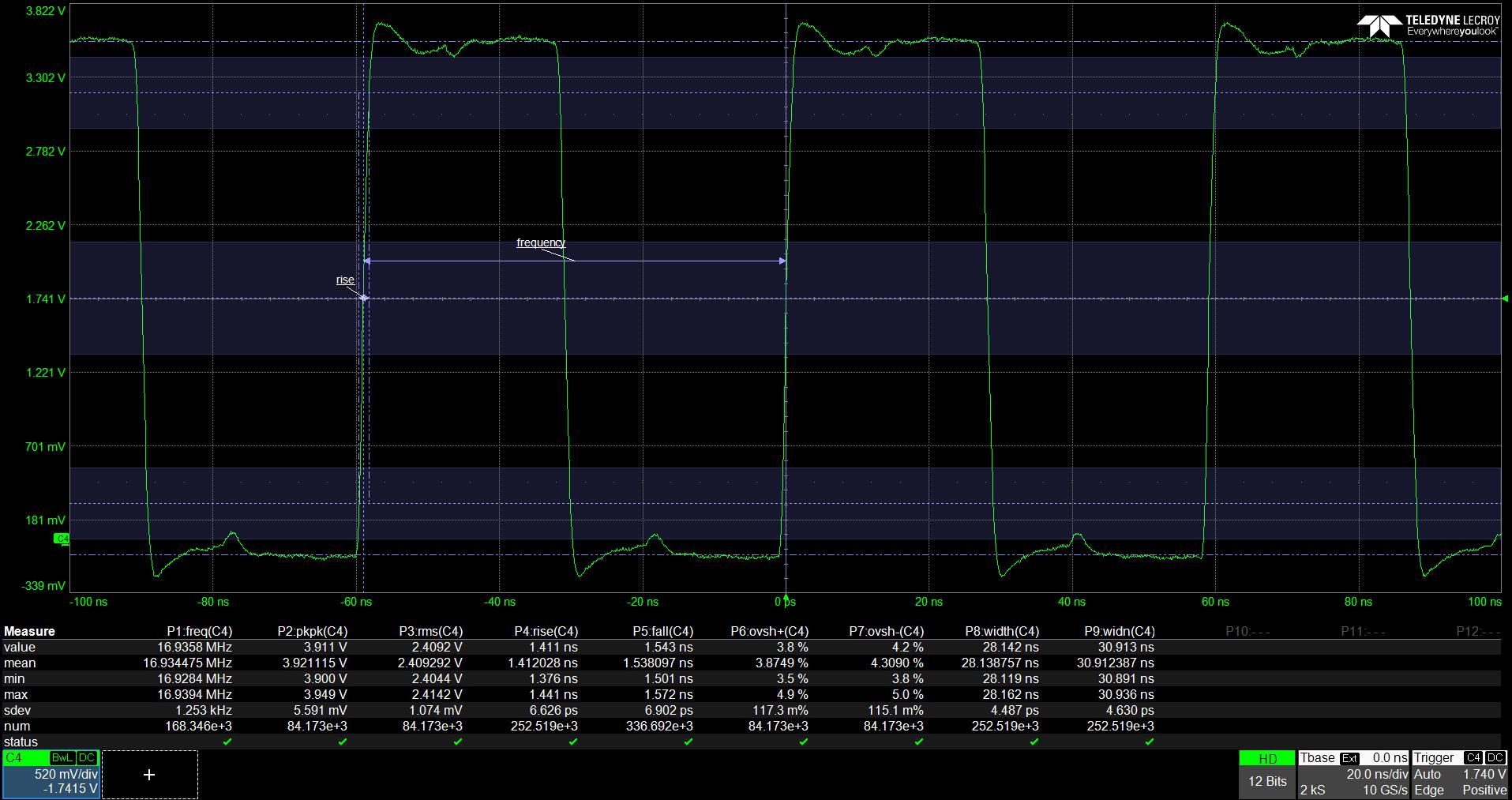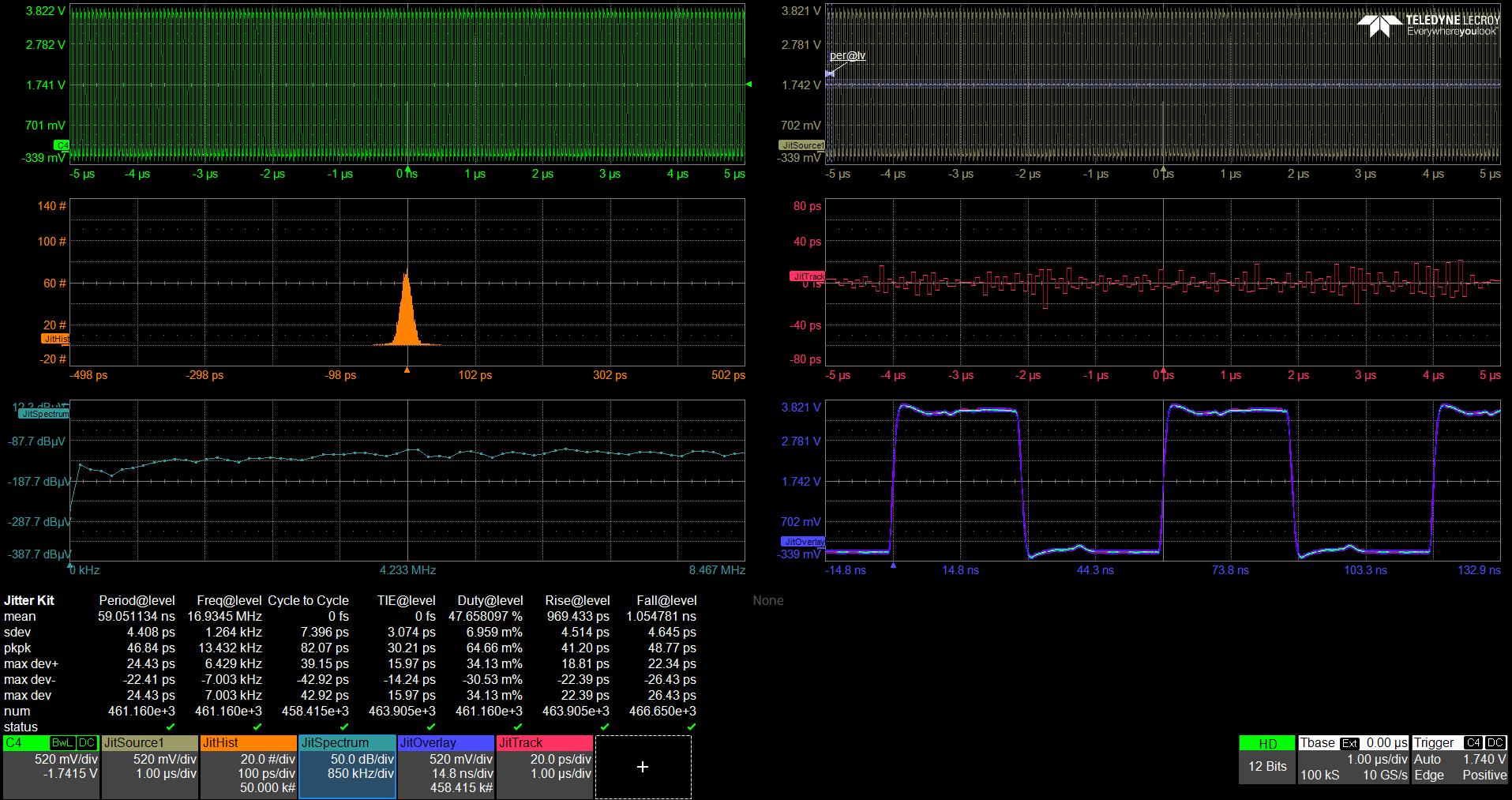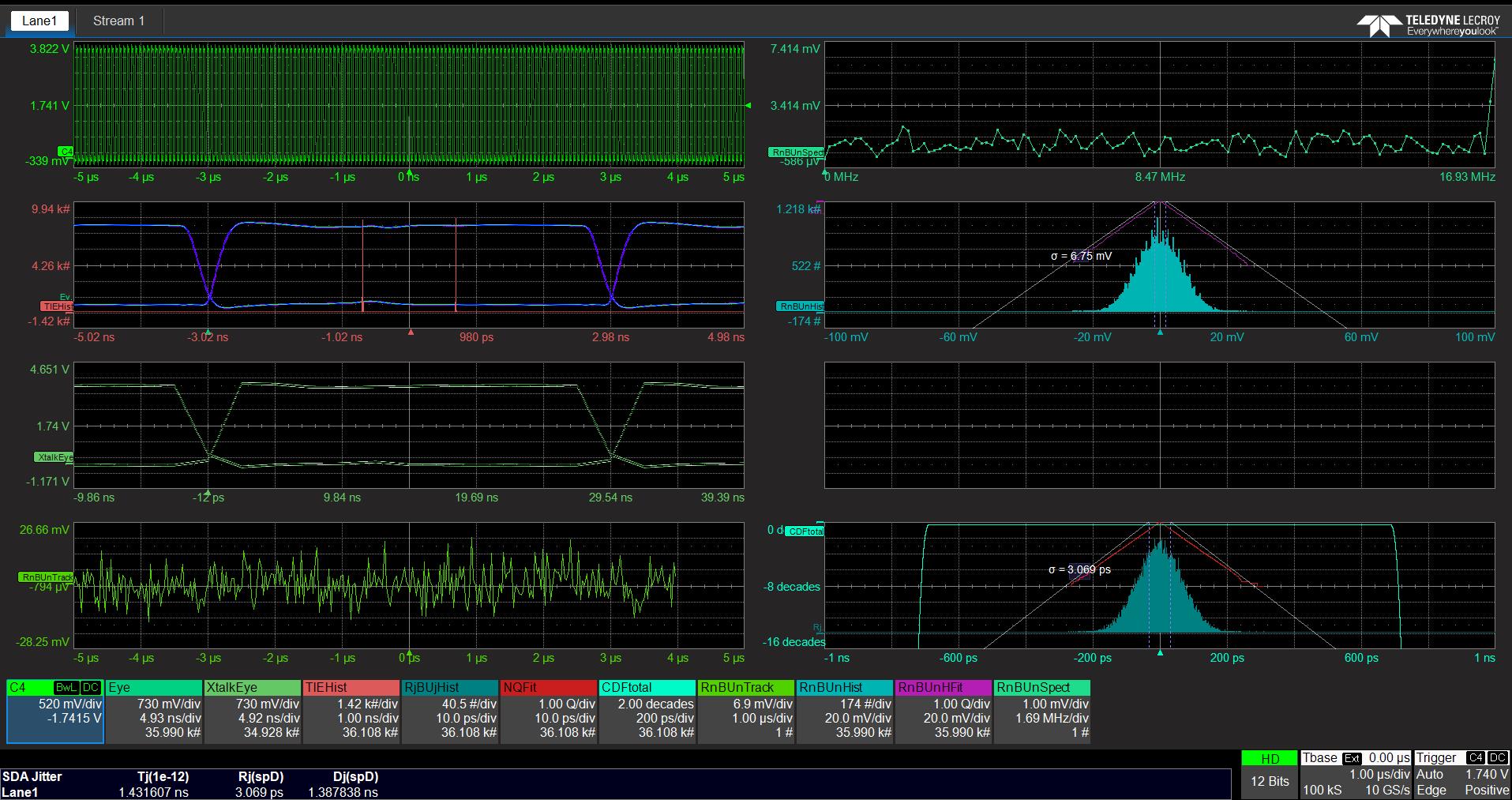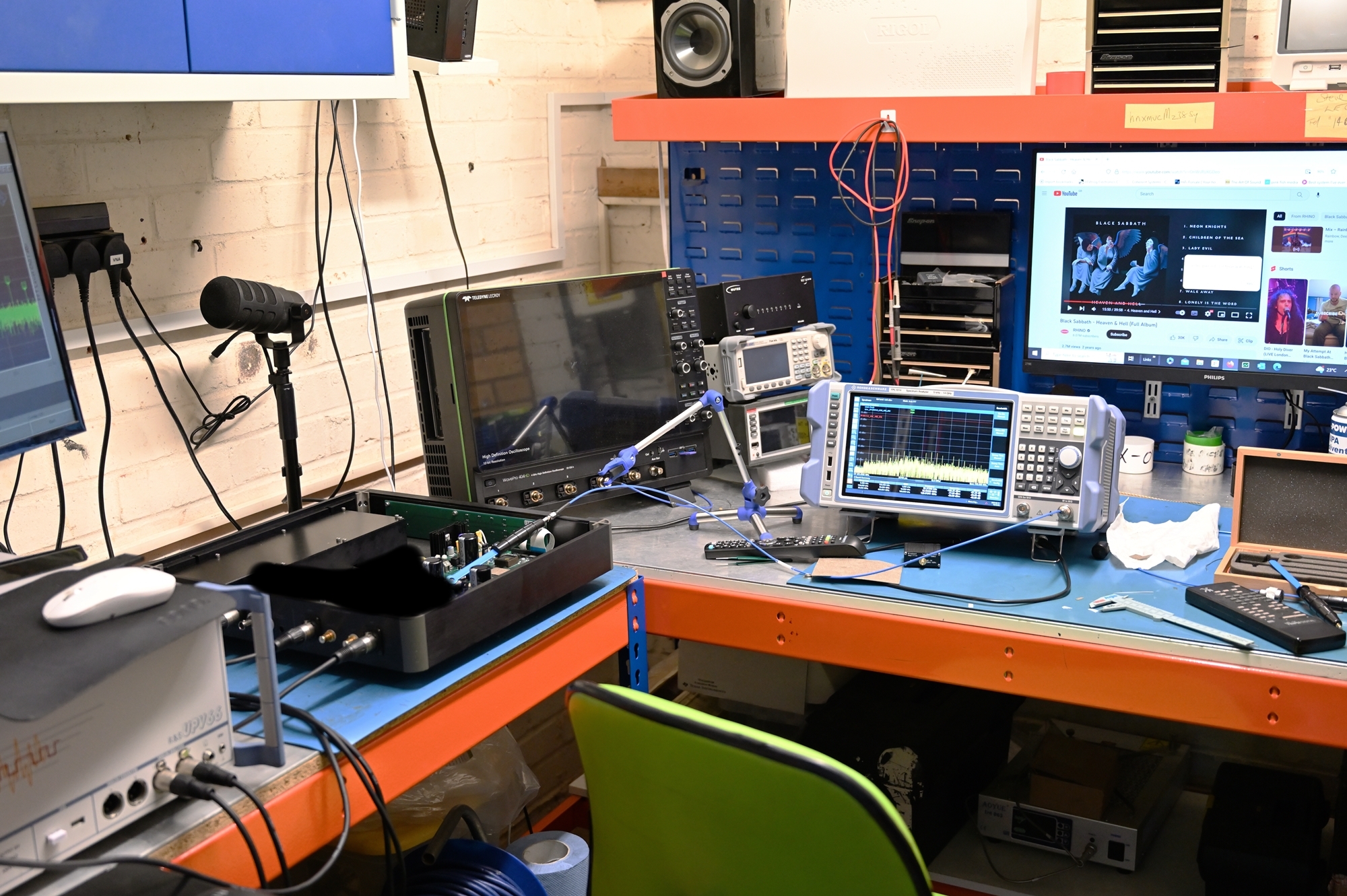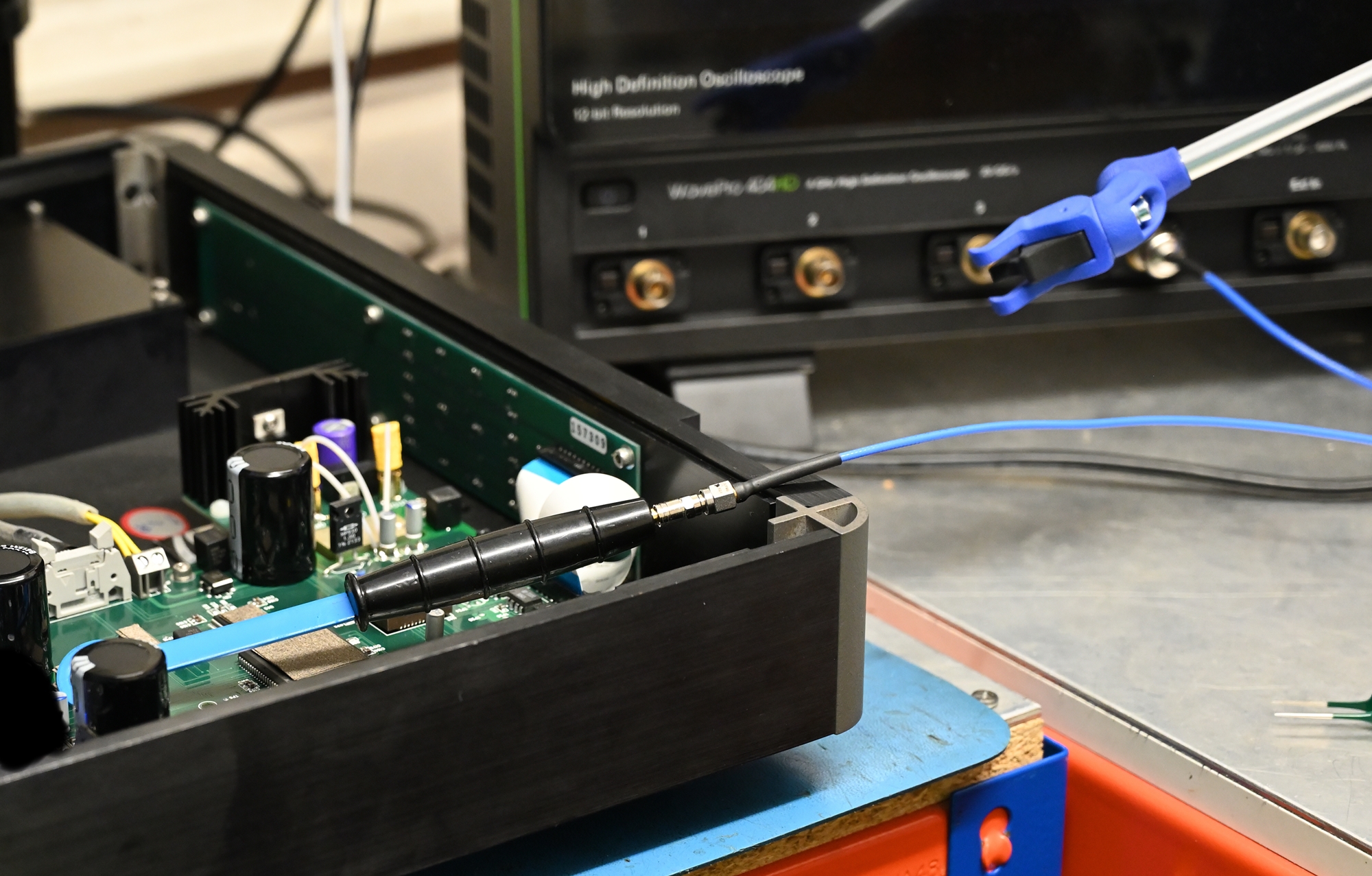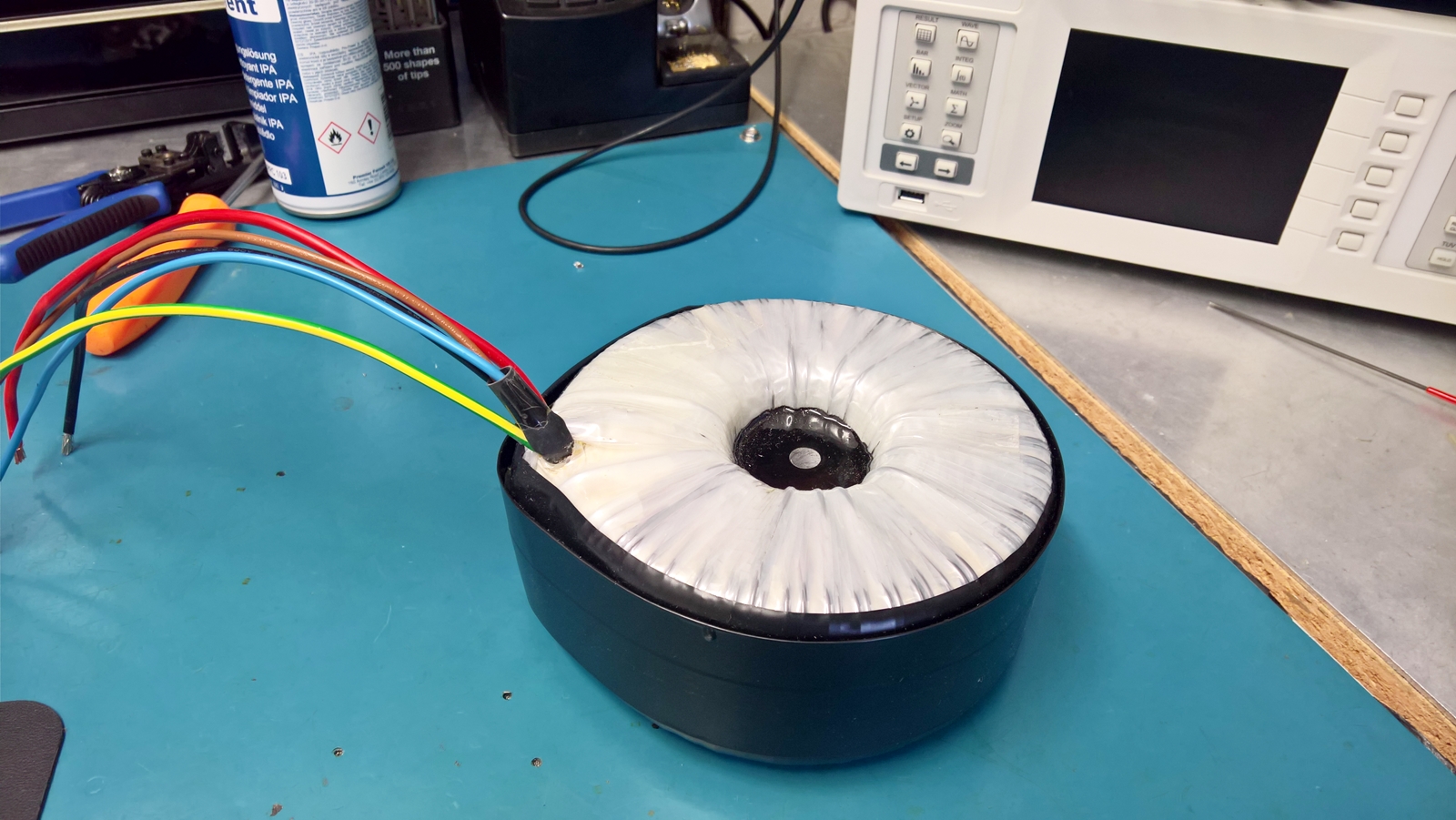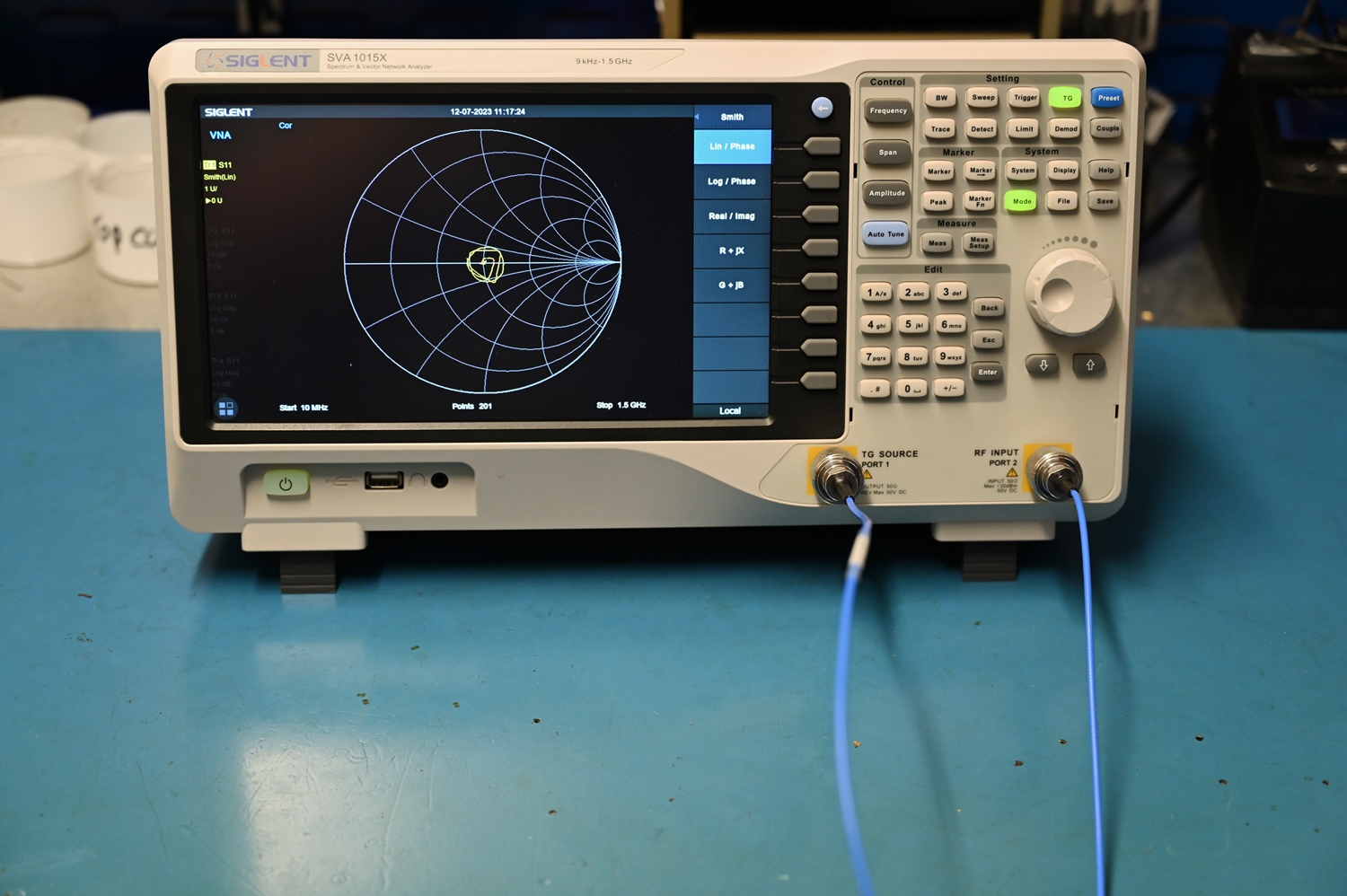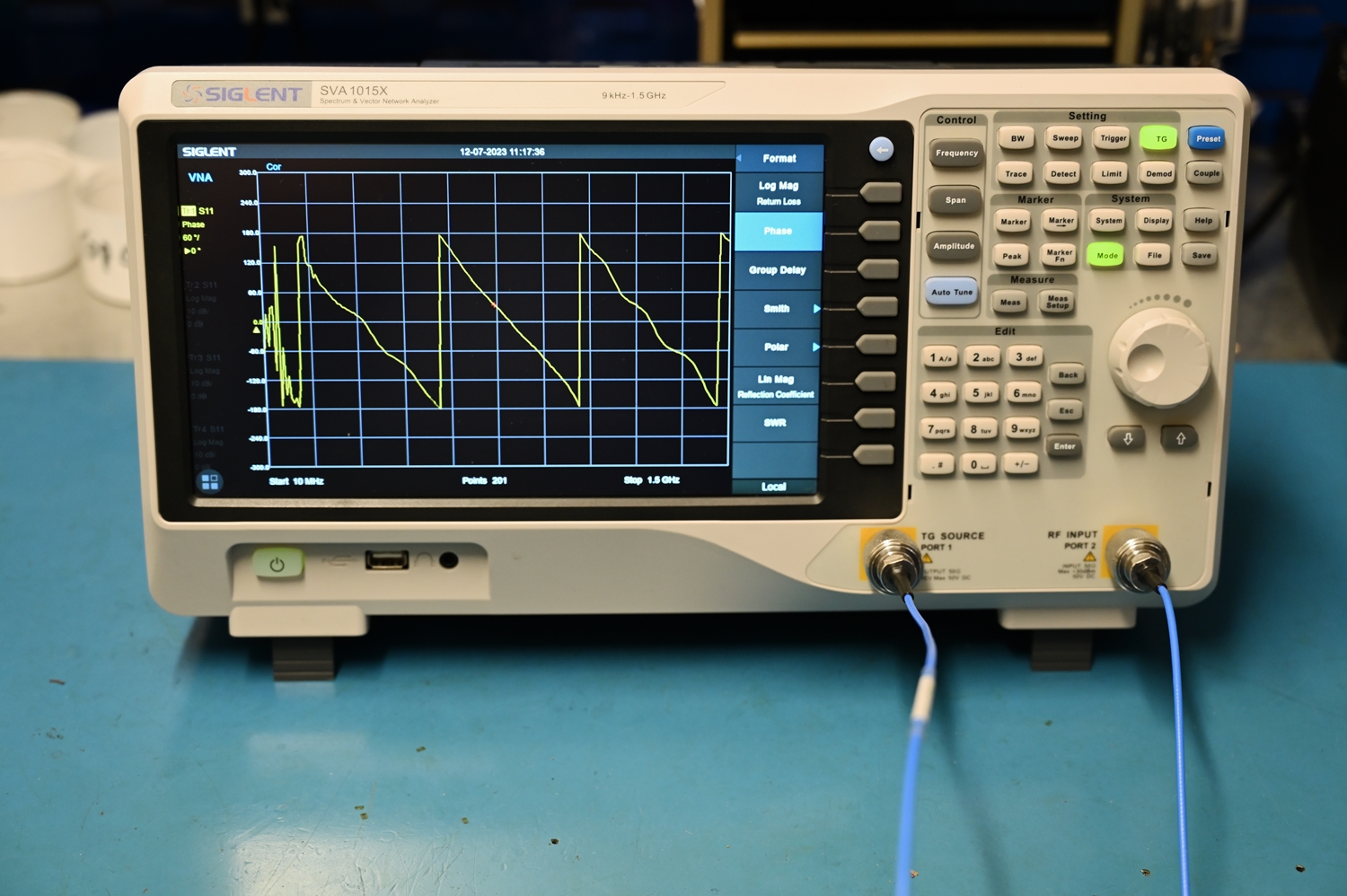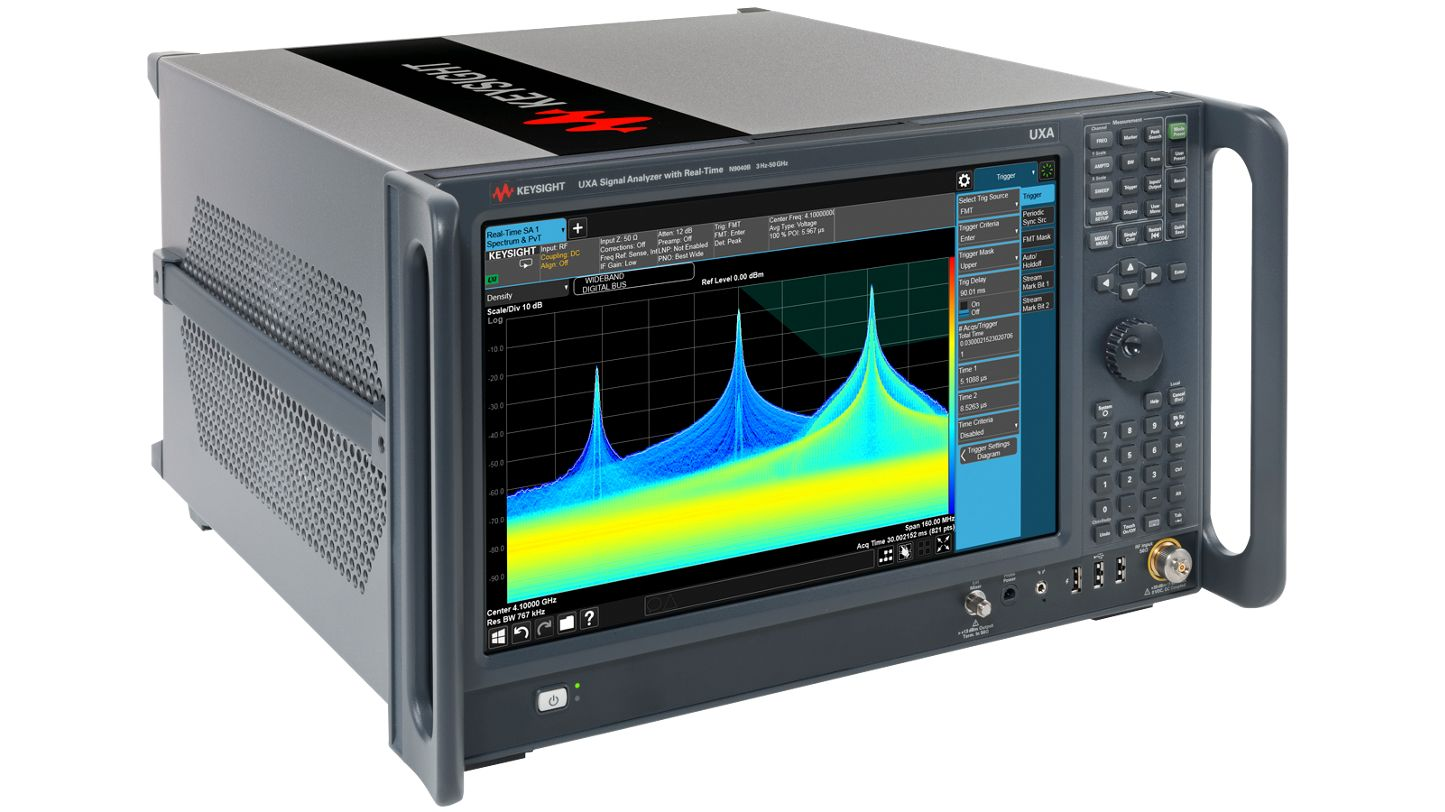|
|
Post by HD Music & Test on Jan 3, 2023 20:02:39 GMT
A quick bite size tech piece this evening, I've been working on some amps recently and I have come across one of ther most common grips in audio why do my speakers buzz/hum ? Ladies and gentleman welcome to the group loop side show, from mild to wild, simple to more frustrating than a wobat's jockstrap hunt in the pitch black with a 2 candle powered sold skool touch . Well below is the absolute classic big old speaker hum which remains constant at 1/4 volume and above. This biys and girls is the quintessential group loop in all its glory, this time on a pre amplifier. When ever you plugged this beastie into any power amp, the resultant issue was pure umittegated hummmmmmmmmmmmmmmmmmmmmmmmmmmmmmmmmmmmmmmmmmmmmmmmmmmmmmmmmmmm utterly deep joy. The investigation has revealed yes indeed we have a ground loop OR incoming power line fault (however I have discounted this due to the various set up's I have worked through beforehand) Below is a scope trace & spectrum analyser plot of the offending culprit in all of its demonic splendour (Boo, Hiss, Swizz) you can clearly see the the 50Hz offender (fundamental frequency) and the various harmonics leading on up the frequency spectrum. Note also the amount of voltage ripple (noise variations) which is around base voltage measurement, while not huge at all (vertical resolution is @ 10mV per division) its the harmonic content which is the cause of the speaker humming This represents a move from an average baseline of around -108dBm up to a peak of -58dBm which is an increase of almost 50% of the noise floor. These measurement where taken from the RCA output sockets with no inputs connected at all.The volume control set at 30% of maximum with the GROUND LIFT switch in the OFF position. The second image is with the GL switch in the 'ON' position note the reduction in vertical noise on the scope voltage trace, but virtually zero difference on the Spectrum plot of the harmonic noise! Just thought some of you may be interested in 'seeing' in real time what one of these bug bears actually looks like in the frequency domain in real time.
Also note that given no inputs are connected then recorded freqeuncy is over 500Khz so if its only going to get 20Khz where does this come from lol
|
|
|
|
Post by MartinT on Jan 3, 2023 20:13:18 GMT
Those are the sorts of problems that can drive you demented given sufficient time. One of my worst cases was a PS Audio GCPH phono stage that I had high hopes for. It hummmmmmed no matter what I did with the grounding arrangements, and the MC cartridge I was using at the time needed a lot of gain, so it was very intrusive. I eventually had to sell it as it was unfixable.
|
|
|
|
Post by Clive on Jan 3, 2023 20:50:46 GMT
I once had a preamp for review from the US. The hum drove me nuts. It was from a frame transformer which was fine with 60Hz in the US but 50Hz in the U.K. and maybe the higher voltage changed the magnetic field. I was the first person to try it out the US…it goes to show that products need fully testing.
|
|
|
|
Post by MartinT on Jan 3, 2023 21:55:39 GMT
It was from a frame transformer which was fine with 60Hz in the US Could have been the same problem with the PS Audio. |
|
|
|
Post by HD Music & Test on Jun 6, 2023 18:52:29 GMT
Well it’s been nearly six months since I last posted on here, my god where does the time go, the weeks just seem to cascade in to each other, and if I produce another 'one off' Quieter solar inverters for audiophiles that feel panels deliver clean power, I may just thrash a whippet  My project time has been few and far between, inbetween bowts of Krell/Arcam/Akai/Revox and Nad repairs coupled with a serious amount of power suppiles time has been precious and also actually being in the mood to spend time to look at these interesting things. Recently I repairing a circuit board for agent who had been 'upgrading' his dac, although I'm not sure using a 120Watt iron to remove a couple of small SMT components in a highly populated section of the unit is a logical method, but there you go! Well its back to clocks again, this time internal derived sample frequencies, placement, optimal distance from dac chips or precision ladder 'entrances', power supply rail qualiy. Oscillator type/cut and quality/to oven or not to oven and all of those possibilities that keep those forum boys up at night. Well today in between the shipping out/deliveries and large amplifier testing (I need to enter does my spinal curve look good in this competition)  So now to brass tacks, I have set up a older design 16.934Mhz clock, taken multiple measurements at various sample rates/probes/ record lengths to form a baseline benchmark. Then I spent a wee while feeding the clock various voltages / current also different power line quality via four different power supplies, one stock wall wart smps, one well designed and filtered smps/ one basic ali express 'influencer touted' / keysight E36313A being fed via a 36-pole filter ac differential filter & crap removal device which feed the main lab instruments Scopes/SA/VNA/DVM etc this has a ripple noise of 350uV in normal mains use.
Below are the highlights of todays experiment, I’m not going to give too much away, however I felt you may appreciate what actually goes into product investigation/ review and new concept implementation. The first few are of the basic clock design with various voltages and currents applied, same probe, same scope, same settings all warmed up for 90 mins before any measurements taken. 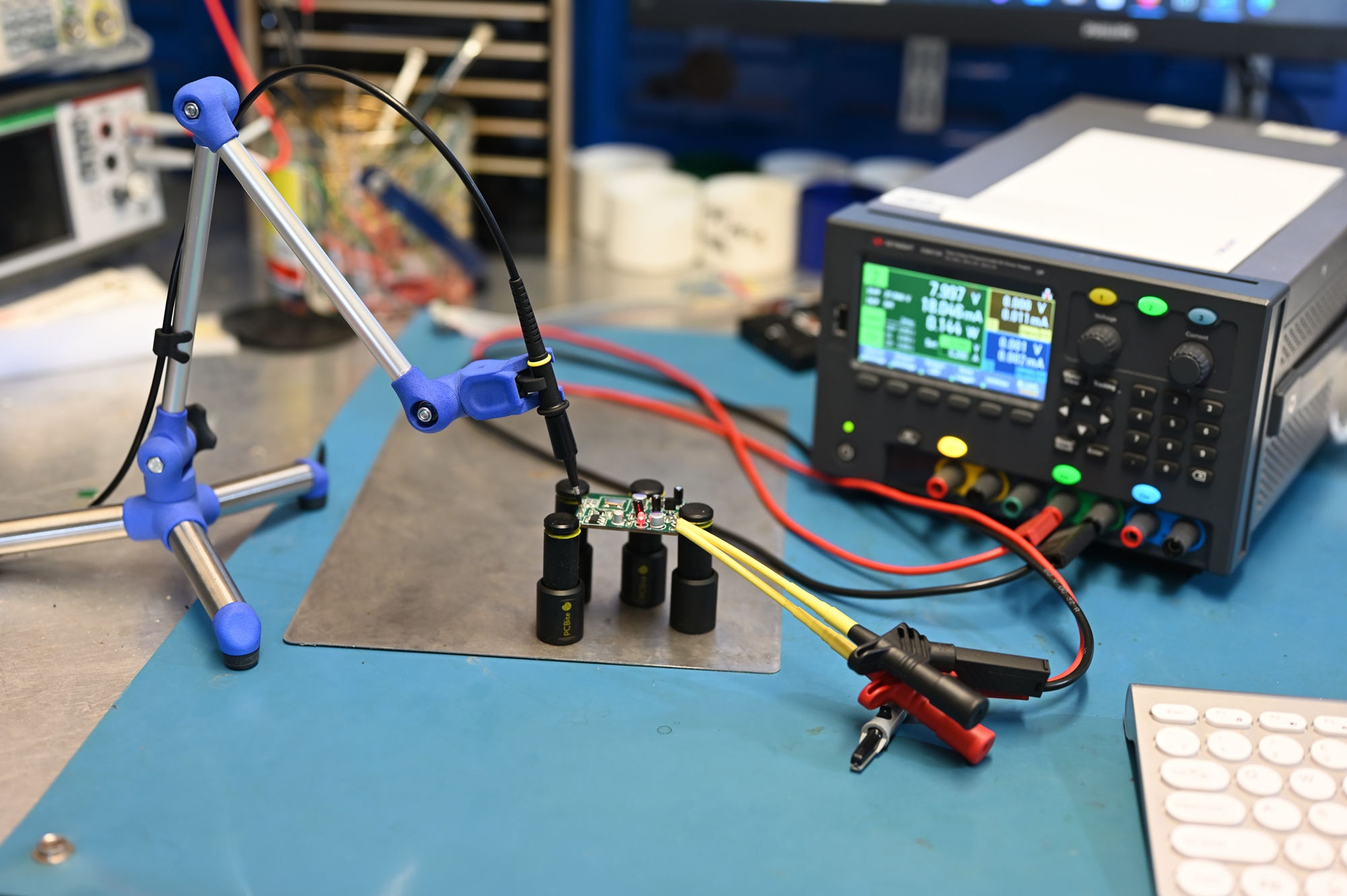
It was quite obvious in the first hour or so, that the wall wart and Ali express LPS were acutally making matters WORSE, totally counter intuitive, given one was a genuine LPS with twin outlets, totally unmolested just very noisy electrically, the much better SMPS with the fancy DC filter was actually OK as in it didn’t degrade the sound at all, compared to the other two!
I stuck with the bench PSU as it was the most ‘linear & stable’ which is what is required when you are looking at consistency of results.
This is also interesting, below is the measurment readings taken with a traditional passive probe and flying lead, this adds inductance so if you are not aware it will cause you much head scratching and frustration, you can reduce this inductive loop by using the spring clip, below is the flying lead image.
Below exactly the same set up but just using the spring clip instead of the flying.
Last one looking at the best supply rail numbers for this particular device
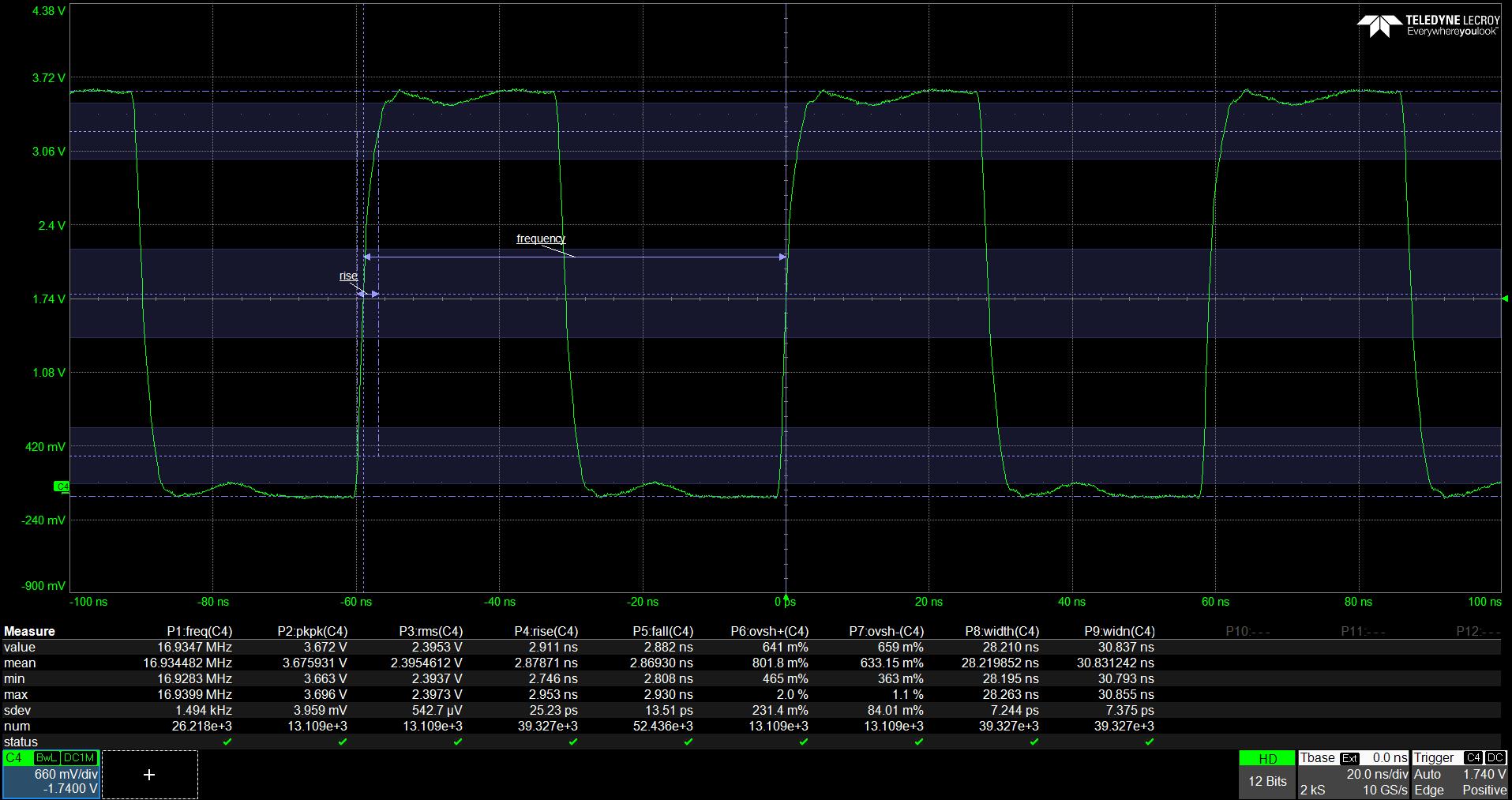
Differential active probes are like two probes in one. Instead of measuring a test point in relation to a ground point (like single-ended active probes), differential probes measure the difference in voltage of a test point in relation to another test point.
These probes provide transparent probe attenuation so signals are always optimized for the display. The differential range is 18 Vp-p with a differential offset of ±8 and common mode range of ±10 V, making this versatile for every probing application.
The wide dynamic range of 16 Vp-p and offset range of ±8 suit this probe to a wide range of applications and signal types. The ZD differential probes are ideally suited for Automotive, Serial Data, power, and general-purpose use. The differential input capacitance is only 1 pF to minimize loading distortion on the highest frequency signals under test. System noise of only 4 mVrms allows accurate measurement of the smallest signals.
Probing with long leads or accessories is sometimes necessary to reach the test points, but it comes at the expense of reduced bandwidth, increased capacitance, and added noise. The ZD accessories are engineered to provide the best signal fidelity without ringing or distortions commonly introduced with tip accessories.
The last scope images are after I have completed removal of long flying leads, installed a new comparator circuit, one circuit bypass, five capacitor changes plus a small ref board underneath to bypass the O.E. voltage reference. Again, I tried with various V/I’s.
On this particular clock I did find a sweet spot for voltages, the original ‘clock’ oscillator is still present and like Martin T found out a few years, its not the ‘best figure of merit version’ either, but that’s for another day.
Sorry for the long post, but the take aways here are, the power supplied to the clock itself is AT least as important or more so than the clock device itself imho
Also that specific voltages and currents can and do make more than insignificant differences, the end result which was ‘measurement wise preferable’ ended up @ 7.85Vdc pulling a 16.314mA load.
The original figures for frequency deviation from 16.934Mhz were 1.45Khz, rise time around 50pS and 18pS for fall time. After the design changes were made the frequency deviation was reduced to 1.260Khz reduction of around 14%.5.35However, the positive and negative widths ended up being rather gopd at 6.635pS for (+ Ve) and 6.932pS (-Ve) there are more reductions in the others individual traits as well, but I have only listed a few.
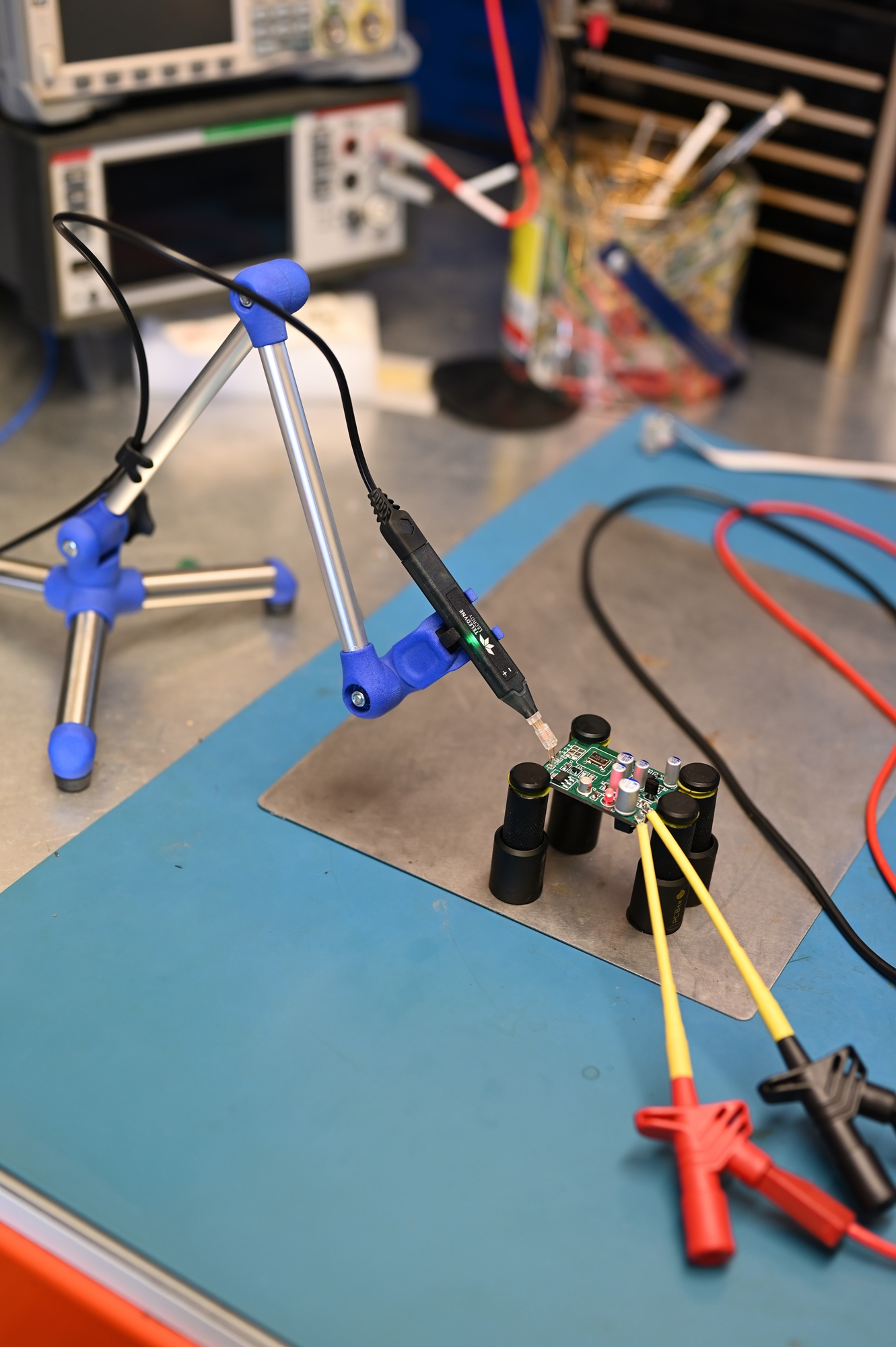
 below are the screen images from the scope after the updates were performed and the active diff probe set up and installed. I have also thrown in a jitter kiot analysis and some serial data in depth clock eye pattern and noise track measurments
How does his sound, well given the clock has to really have around 200hours of use, I can’t say right now, but I have another untouched clock with the same older configuration, both are now being exercised, so by this time next week I will be able to make a judgement call.
|
|
|
|
Post by MartinT on Jun 6, 2023 19:00:38 GMT
That looks like the clock PCB that you installed in my old LKS, Tony?
It certainly improved the sound quality of that DAC compared with the rather awful Crystek 575.
|
|
|
|
Post by HD Music & Test on Jun 12, 2023 9:33:59 GMT
Its all hands to pumps this week with the superb North West Audio Show happening this weekend, we really rate and like this show and have supported it since it's inception. Lots to see and do, good food sensible costs, great grounds and hotel plus one of the few shows that exhibitors make a good effort for. Right in the heart of Whipper thrasher & toe tapper land, its the anti-thesis of Bristol. Great atmosphere & a relaxed musical environment with very little hifi pap imho.
Over the weekend I thought I'll just try and see if I could cajole W25 into giving some more of its rather special musical moxy, recently while working on some aerospace project, so I felt it was worth a try.
Also gave me change to try out a new set of H & E field sniffer probes, so while you chaps were enjoying the superb weather yesterday I was playing hunt the RF noise lol
Anyway the upshot is quite noticebale even after 14 hours of use, the sheer presence this dac now exudes is most grin inducing like a honey badger taking a chunck out of a lion's ball sack 
Depth on this dac has always been one of the strongest traits in stock form, it never disappoints big wide and DEEP now its plain old intoxicatingly cavernous in the least, also the noise floor has reduced a little (lol) not that it was high in any way, I have managed to reduce the noise between the fudemental harmonics to deep, deep in the mud. Even Qoboz sounds like the old days with files now, quite listenable.
I did spot some mains coupling from 50 to 500Hz, although this was between -88 & -115 dBc with the ref level @ +20dBc and that was with the lab supply and not the system power supply. Given this is the stock Tx I'm quite please with this 
Here you can see how we look at the dac while on the analyser & using the EMI spurrious location app on the spectrum analyser at the same time.
Also a new lens for the Nikon as well, the H field prove is virtually sat on one of the clocks this is purely for illistration, you can see the probe holder in the background but the shot didn't look right so some artistic license was used! However not shabby a result i any way.
|
|
|
|
Post by julesd68 on Jun 12, 2023 10:13:13 GMT
Hope I can get to the show next year, it does look very worthwhile and you get to meet some real audio legends...   |
|
|
|
Post by mattspl on Jun 12, 2023 10:22:42 GMT
You’ve been busy Tony. The NWAS looks good and a great venue, not a million miles from where I used to live.
|
|
|
|
Post by HD Music & Test on Jul 6, 2023 13:33:30 GMT
Ok this is a must share I was testing some new designs and couldn't quite work out my the readings were off, any way check this out  shockingly good for once 
The chaps at the winding empourium have dropped off my monthly transformer order (sterling fellows) last time, I asked when they had a slot in production could they make this new idea I had kicking about up stairs so they delivered this beauty (along with a couple of other versions) this is one very astute TX and part of one fo the most ultra stable power & lowest noise supplies ever to come out of the Big W's lab. I feel a create of Weston's old Rosie will heading there way tomorrow.
|
|
|
|
Post by stellabagpuss on Jul 6, 2023 16:06:39 GMT
So what do you plan to use it in Tony?
|
|
|
|
Post by HD Music & Test on Jul 6, 2023 17:59:37 GMT
Hello Damien
I have four of these new design Tx's, that one is for a new amplifier model I've been working on its 1.2Kva and can supply 66 amps of current. It going to big a grunty two channel ultra fluid and natural bottomless torque style of amplifier
There are two larger 2Kva units for the monobloc versions of said amplifer.
Lastly a rather spiffing five rail 1.5Kva unit for the Wadia dual mono's dac's.
Been waiting for about two months for these, holiday first though!
|
|
|
|
Post by stellabagpuss on Jul 6, 2023 19:24:22 GMT
They look like beasts!
Have a good Holiday in Portugal 🇵🇹
Time to recharge your panels
|
|
|
|
Post by MartinT on Jul 6, 2023 19:45:19 GMT
They do look well made and the regulation should be excellent.
|
|
|
|
Post by HD Music & Test on Jul 12, 2023 16:54:48 GMT
As I am having a lab re arrangement currently I thought I would dust off the VNA (Vector Network Analyser) these are used for cable measurments S11/S12 & S21/S22 return loss (dynamically), antenna seting up (SWR). circuit pathway measurments/ base and broad band emmission monitoring and 5/6G & higher communication rf transmission decoding etc
So I found an appropriate 'N' terminated 50Ohm T-flex 405 cable, let the instrument warm up for a hour or so, calibrated then looked at the results of investigation.
Now on this unit only looking up to 1.5Ghz (not quite DC to daylight lol) anyway these imahes are of the Smith chart/ phase response / Polar chart and S11 reflection coefficient (gamma) ideally as close to one is the goal. Phase response here looks odd but is actually very good. With the DUT (cable) showing just over 3.2 cycles in 1 GHz, that's equivalent to an electrical length of about 3.2 feet, the actually cable length is 90cm so pretty close I feel. light tarvels at about 1 ns per foot or in a typical plastic-insulated cable a physical length of about 2.2 ft / .67 m in that time period.
The botom line is the 405 measures very good and sounds fine as well, is that always the case............. er No! but with the T-flex it is.
|
|
|
|
Post by stellabagpuss on Jul 12, 2023 17:42:28 GMT
Excellent Tony,hope you had a good holiday.
Nice example,shame you didn't test a not so good cable,so we could compare graphically on your images.
Anyway nice bit of kit!
|
|
|
|
Post by HD Music & Test on Jul 12, 2023 18:48:23 GMT
Hello Damien
That's the back up VNA, we have more exotic versions for slightly more trickier situations and dynamic cables measurements are not really (at this level & frequency) are not taxing.
Now the cable I use personally don't read anything like that and there are reasons for this. Also I have a few cables which are improved over the 405 measurment wise but do they sound the same? As I mentioned in pervious post back in the annals of time (it feels like it anyway!) make the 405 sound like bell wire, however you need to have the full inforstructure in place to really expliot these cables along with the price tag.I would suggest that utilising your funds in other areas first will bring far more benefits all round.
I have some other technical features planned over the next few months plus some insight as to why certain equipment works 'better' with certain other types of brands.
Plus a new feature Big W's video-casts on basic electronic skills and how to improve them.
|
|
|
|
Post by stellabagpuss on Jul 12, 2023 19:53:18 GMT
As always Tony.. l look forward to next post.
Thanks for putting the effort in,and giving back to the hobby
|
|
|
|
Post by HD Music & Test on Aug 20, 2023 15:31:01 GMT
Well lab upgrades have been progessing well in the last few months, and shortly I will be inpocession of one of the very best signal anaysers on the market with full phase noise & noise figure abilities up to 26.5Ghz. Its a bit good 
What this means is ultra accurate zero bullshit clock measurments for jitter & phase noise in the real world and end user testing.
|
|
|
|
Post by HD Music & Test on Aug 22, 2023 15:29:02 GMT
Yet again time is hurtling away at FTL speeds, its nearly September for crying out loud, the workshop & sales have been busy over the summer (lol) months plus I'm working on some interesting new projects: One IoT wearable medical tech plus some new 5/6G communication devices which do require quite significant investment to enable you to obtain accurate. repeatable high bandwidth abilities IE over 25Ghz .
Have restored some really nice older equipment recently including a rather nice Akai 2350 (which in fairness looks like it had just left the factory before we had the privilege of working on it) who says you need gazillons of watts to sound good!
More lab updates and internal restructuring, new to chez Coherent towers a really neat time saving piece of test equipment a Keysight N6705C DC power analyser which is in effect four instruments in one neat package an DVM digital volt meter / Arbitrary wave form generator this allows you to design your own wave forms to simulate various load/ start up and power draw changes within a devices power/ load state change and power down cycles / Data logging which allows you to monitor the device under test performance over a given time period then go back and analyser the data at a later time very handy for references / Oscilloscope mode which allows wave form visual read out in the time Vs voltage domain. The device has four modular slots which allows up to 4 individual power supplies to be fitted, or DC electronic load modules as well. It can even accommodate a SMU (source / measure unit which can source and sink current in one module) so really 6 instruments. Images to follow next week once I've install a wraparound curved 34inch 4K monitor and rejigged the main lab bench (again)
As mentioned before due to the upcoming projects it has been necessary to bite the bullet; so I have been negotiating for one these measurement power houses, as I'm fresh out of kidneys and like to keep my sound system (lol) robbing banks these days is a bit old hat, seems that digital white collar crime is in vogue (lol) not that I wouldn't know WTF to start .
Anway in the not-too-distant future one of these world class signal analysers’ will be finding its way to the lab, have measured up and worked out its location (lol) not much I can't dig out of the so-called digital mud with this wee beastie.
What this means is ultra accurate zero bullshit clock measurments for jitter & phase noise in the real world and end user testing.
|
|
